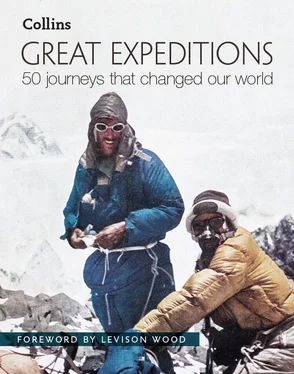Race to the South Pole
The expeditions of Roald Amundsen and Robert Falcon Scott
“ I may say that this is the greatest factor – the way in which the expedition is equipped – the way in which every difficulty is foreseen, and precautions taken for meeting or avoiding it. Victory awaits him who has everything in order — luck, people call it. Defeat is certain for him who has neglected to take the necessary precautions in time; this is called bad luck.
From The South Pole , by Roald Amundsen
WHEN
1910–12
ENDEAVOUR
Becoming the first human to reach the South Pole.
HARDSHIPS & DANGERS
Extreme cold, frostbite, hunger, exhaustion.
LEGACY
Roald Amundsen was the first man to reach both poles. He also made the first voyage through the Northwest Passage. Robert Scott reached the South Pole after Amundsen and died on the return journey. But his stoicism in the face of certain death continues to earn respect.
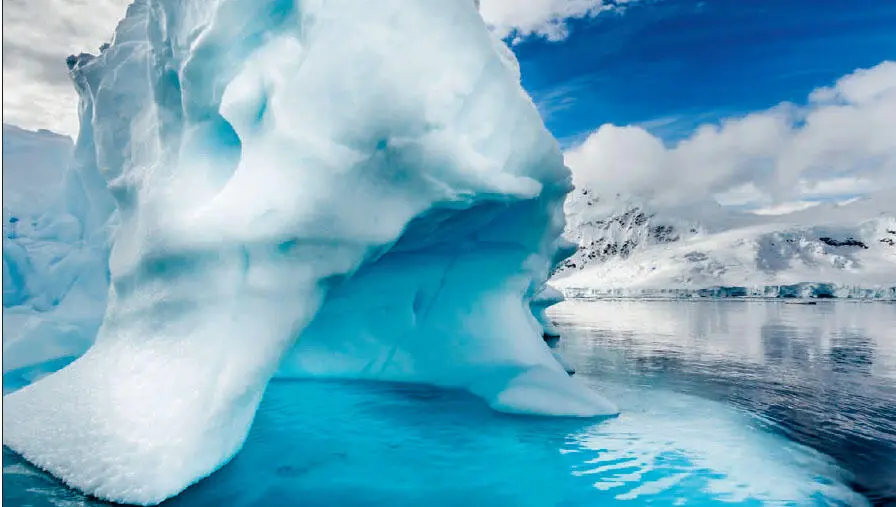
Until colour photography was invented, only whalers and explorers were able to fully appreciate the beauty of Antarctica.
The search party had found the tent. Steeling themselves, the men looked inside. As they expected, the emaciated bodies of Captain Robert Scott and two companions lay frozen solid, shrouded in drifting snow. Scott’s sleeping bag was thrown open and his coat was unfastened; he had hastened the end. Somewhere outside, forever lost in the merciless Antarctic, were two other men who had also perished. Such was the price they paid for coming second in the race to the South Pole.
Natural born heroes
When Robert Falcon Scott left Britain on his 1911 attempt to be first to reach the South Pole, he was already a national hero. He had commanded the Discovery Expedition of 1901–04, which included another great explorer, Ernest Shackleton. Scott and Shackleton had walked further south than anyone else in history: they got to within 850 km (530 miles) of the pole.
While Scott was making his record-breaking South Pole approach, Roald Amundsen was making a pioneering polar trip at the opposite end of the world. Born in 1872 into a Norwegian family of maritime merchants, Amundsen had been forced by his mother to study medicine. When she died he packed up his books and, aged 21, left university for a life of adventure. Amundsen led the 1903–06 expedition that was the first to traverse the Northwest Passage. On this trip he also learned some Inuit skills that would stand him in good stead; how to use sled dogs to transport stores and how much better animal skins were at insulating in the cold and wet than the heavy, woollen parkas typically used by European explorers.

An extract of a German map from the period showing the explorers’ routes to the South Pole.
Unfinished business
In 1909, Scott heard that his former fellow explorer Shackleton had got to within 180 km (112 miles) of the Pole on his Nimrod Expedition before being forced to turn back. Scott was aware that other polar ventures were being planned and, gripped by ‘Polemania’, he duly announced that he would lead another Antarctic expedition. Hopes were now high that a Briton would be the first to stand on the bottom of the world, and Scott did not want to disappoint. His expedition sailed from Cardiff in June 1910 on the former whaling ship, Terra Nova on a seven-month journey to Antarctica.
While Scott was looking south, Amundsen had his sights set on the North Pole. However, in 1909, he heard that two separate American expeditions, led by Robert Peary and Frederick Cook, had both attained this goal, so he decided instead to head for Antarctica. (Peary and Cook are both now generally considered not to have attained the North Pole.) Amundsen and his crew left Oslo on the Fram (the ship previously used by Fridtjof Nansen, see page 188), heading south on 3 June 1910.
When Scott got to Melbourne, Australia, he found a telegram from Amundsen, announcing that he was ‘proceeding south’. The Terra Nova stopped for supplies in New Zealand and then turned south in late November. Scott now had a run of what he termed ‘sheer bad luck’. A heavy storm killed two ponies and a dog, and also caused 10,200 kg (10 tons) of coal and 300 l (65 gallons) of petrol to be lost overboard. The Terra Nova then got stuck in the pack ice for twenty days before managing to break clear.
The Fram’s run south in the meantime, had been relatively smooth.
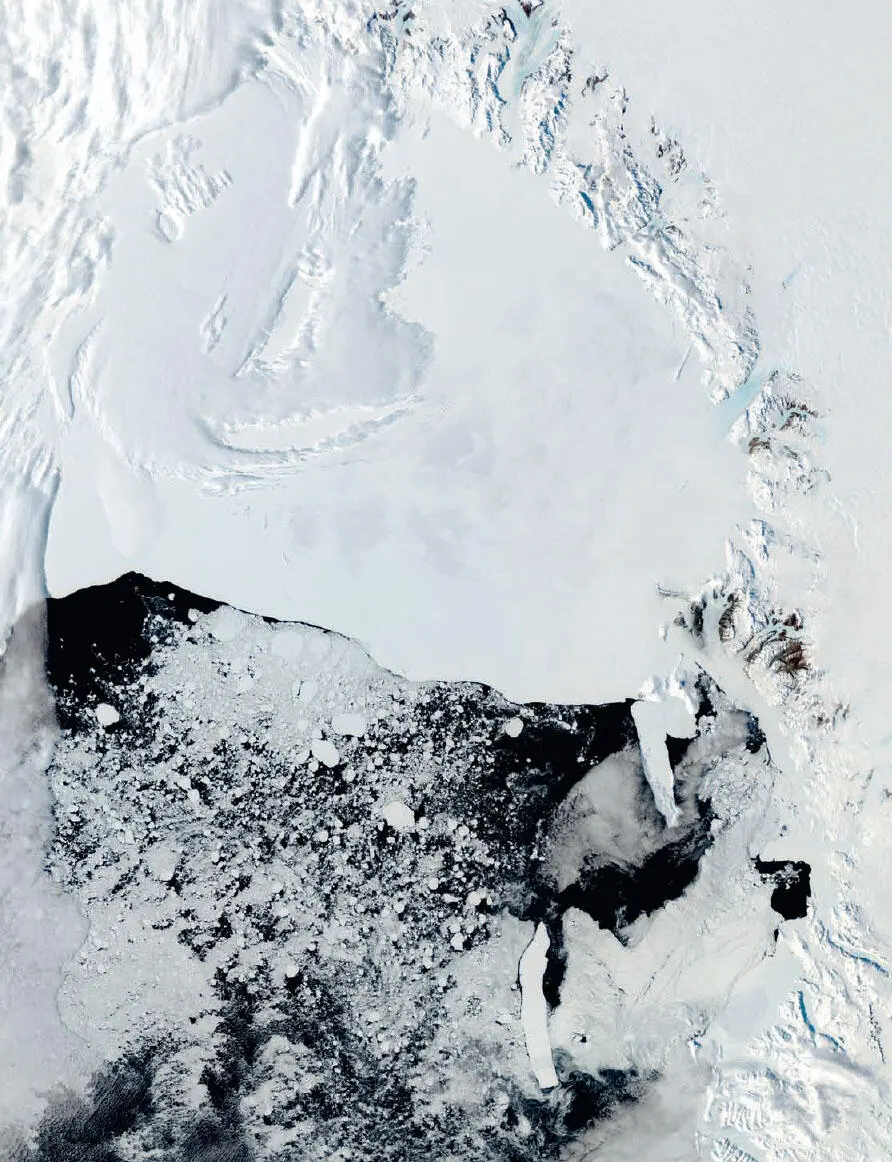
A recent satellite image from a similar vantage point. The Ross Ice Shelf, Transantarctic Mountains (top half) and Ross Sea (lower half) are clearly visible.
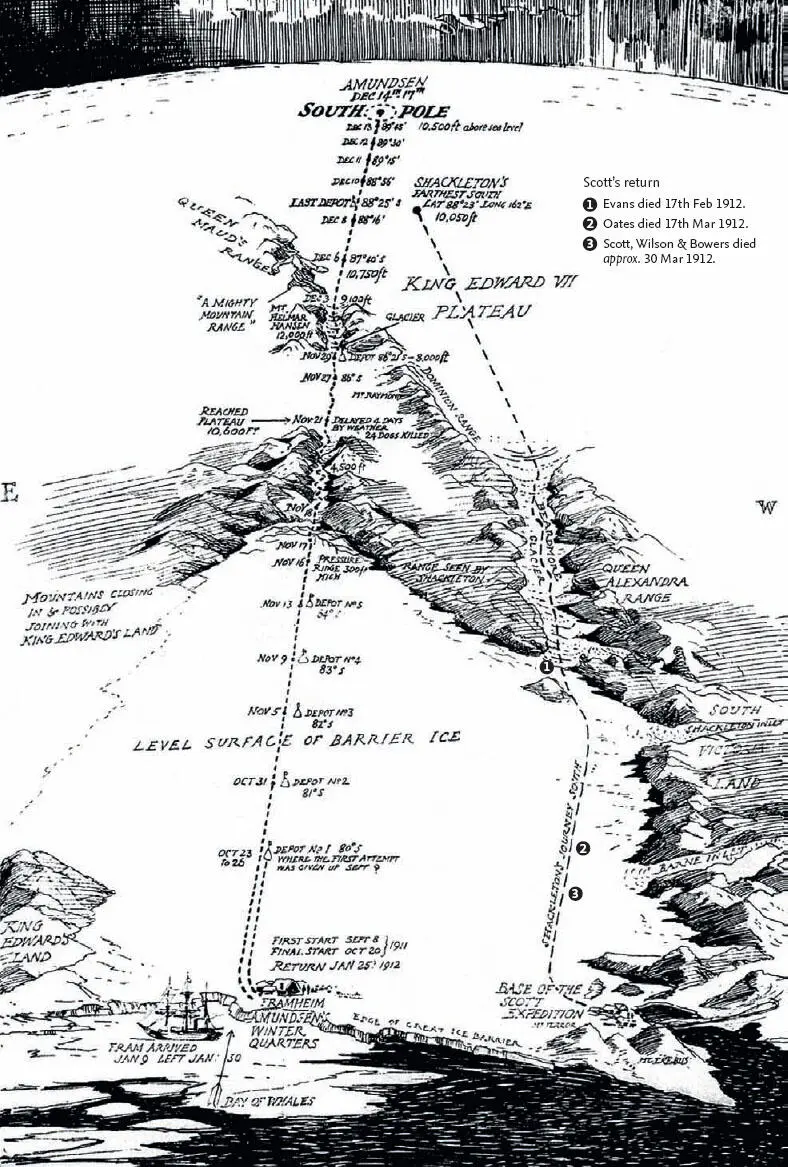
A historical Bird’seye view map of Amundsen’s South Pole Expedition. Scott’s route can also be seen (with added annotations) as it followed the same route as Shackleton’s 1907–09 expedition.
The rivals meet at the end of the Earth
The Pole attempts had to be made in the Antarctic summer as conditions were too severe during the rest of the year. This period of relatively better weather and constant light only lasted from November to March. The plan was to arrive during one summer, set up camp and see out the winter, then push for the Pole when the next summer’s weather window opened.
The Terra Nova finally reached Ross Island on 4 January 1911. Scott’s team set up their base camp at a cape near where he had camped on his Discovery Expedition nine years before. They had at least nine months before they would make their Pole attempt. In the meantime, Scott was determined to keep busy, and to pursue their scientific goals. He sent a party east to explore King Edward VII Land and Victoria Land. This team was returning westward when it was astonished to see Amundsen’s expedition camped in the Bay of Whales, an inlet on the eastern edge of the Ross Ice Shelf. The Norwegians had arrived on 14 January. Amundsen was friendly to the Englishmen, offering them a welcome to camp nearby and care for their dogs. These offers were declined and the party returned to base camp. Scott wrote about the meeting in his journal: ‘One thing only fixes itself in my mind. The proper, as well as the wiser, course is for us to proceed exactly as though this had not happened. To go forward and do our best for the honour of our country without fear or panic.’
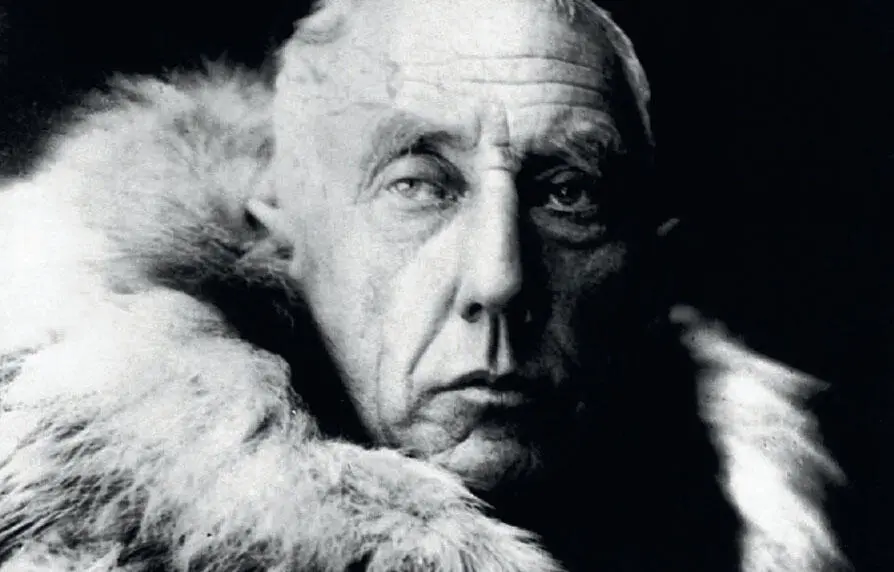
Roald Amundsen in furs, c.1912.
Different men, different strategies
There were three main stages to be tackled on the 1,450 km (900 mile) trek to the Pole: crossing the Ross Ice Shelf (an area the size of France); ascending a glacier to reach the polar plateau; and then crossing that plateau to the Pole itself. Once at the pole the journey then had to be done in reverse.
Читать дальше
